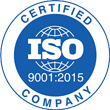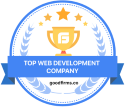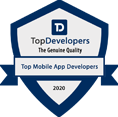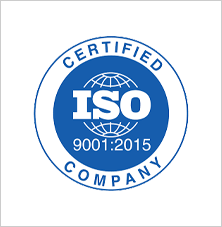Top 5 Backend Frameworks for Web App Development

Developing web applications requires the utilization of backend frameworks, which consist of server-side language libraries. These frameworks play a crucial role in configuring the server and enable the creation of dynamic, interactive, and secure web apps capable of handling complex business logic and data processing.
Selecting the appropriate backend framework for your web app development project can be overwhelming due to the many options available in the market, each with its advantages and disadvantages. To assist you in making an informed decision, we have compiled a compilation of the top 5 backend frameworks projected to dominate the web development landscape.
Laravel
Laravel, an open-source PHP framework following the MVC (Model-View-Controller) architecture, leads the pack. It stands as one of the most popular and widely employed backend frameworks worldwide, garnering over 65k stars on GitHub1. Laravel offers a comprehensive range of features and tools that expedite web app development, making it an enjoyable and efficient experience. Key highlights of Laravel include:
- Eloquent ORM:
A sophisticated object-relational mapping (ORM) system that enables interaction with various databases using an expressive and fluent syntax.
- Blade Templating Engine:
An adaptable and robust templating engine facilitating the creation of clean, reusable HTML code embedded with PHP logic.
- Artisan Console:
A command-line interface (CLI) offers a set of valuable commands for code generation, test execution, database migration, and more.
- Laravel Jetstream:
A scaffolding tool that serves as a starting point for constructing modern web apps, featuring authentication, authorization, team management, and other essential functionalities.
- Laravel Sanctum:
A package facilitating stateful API authentication using Laravel sessions or tokens.
- Laravel Breeze:
A minimalistic and straightforward scaffolding tool equipping web apps with basic authentication and dashboard capabilities.
- Laravel Mix:
A web pack wrapper streamlines the compilation and bundling of assets such as CSS, JavaScript, and images.
- Laravel Cashier:
A package integrating Stripe and Paddle payment services with Laravel applications.
- Laravel Nova:
A premium admin panel boasting a beautiful and intuitive interface for efficient data and resource management.
Laravel caters to web app development projects of any scale or complexity, ranging from simple blogs to enterprise-level applications. With a vibrant community of developers actively contributing to its advancement and providing support and resources, Laravel also offers an ecosystem rich in packages, plugins, tutorials, courses, books, podcasts, and blogs, fostering mastery and knowledge acquisition.
Django
Django, a Python-based web framework, strives for speed, flexibility, and security. Following the “batteries included” philosophy, Django provides a comprehensive suite of tools out of the box, rendering it suitable for developing web apps without requiring extensive configurations. With over 58k stars on GitHub2 and trusted by renowned companies like Instagram, Spotify, and Netflix, Django offers the following key features:
- ORM:
A feature-rich ORM system enabling the definition of data models using Python classes and querying them through a powerful API.
- MTV (Model-Template-View) Pattern:
A design pattern segregates the logic, presentation, and data layers of web apps.
- Admin Interface:
A built-in admin interface simplifies CRUD (Create, Read, Update, Delete) operations on data models.
- Forms:
A forms framework that streamlines the creation and validation of HTML forms.
- Authentication:
A comprehensive authentication system encompassing user registration, login, logout, password management, and permissions.
- REST Framework:
A third-party package facilitating the construction of RESTful APIs with Django using serializers, views, routers, etc.
- Django Channels:
An extension of Django’s capabilities, empowering real-time communication via WebSockets or alternative protocols.
- Django Debug Toolbar:
A debugging tool furnishing valuable insights about requests, responses, queries, templates, and more.
Django excels at developing data-driven web apps necessitating high performance, scalability, and security. Embracing a clear and pragmatic approach to web development, Django advocates best practices and code quality. Furthermore, Django thrives on its extensive and supportive community, offering assistance and guidance through various channels such as forums, mailing lists, and chat rooms.
Ruby on Rails
Ruby on Rails serves as a Ruby-based backend framework enabling the development of top-notch web applications in a dynamic web environment. Embracing the convention over configuration (CoC) principle, Ruby on Rails assumes sensible defaults for most aspects of web app development, minimizing the need for excessive boilerplate code. With over 48k stars on GitHub2 and trusted by prominent websites like Airbnb, GitHub, and Shopify, Ruby on Rails offers the following key features:
- Active Record:
An ORM system mapping data models to database tables and providing a fluent query interface.
- Action View:
A flexible templating engine rendering views through embedded Ruby (ERB) code or other formats like Haml or Slim.
- Action Controller:
A controller layer handles incoming requests, performs actions, and delivers responses.
- Action Mailer:
A mailer layer facilitates the sending of emails from web apps using SMTP or alternative delivery methods.
- Active Job:
A background job framework supporting asynchronous tasks such as email delivery and payment processing.
- Active Storage:
A file storage framework enabling file upload and attachment to data models using services like Amazon S3 and Google Cloud Storage.
- Action Cable:
A real-time communication framework allowing message exchange between the server and clients via WebSockets or alternative protocols.
- Rails Console:
A REPL (read-eval-print loop) tool empowering interaction with the web app’s environment using Ruby code.
Ruby on Rails thrives in the development of web apps requiring rapid prototyping, creativity, and innovation. Its friendly and expressive syntax fosters an enjoyable coding experience. Additionally, Ruby on Rails possesses a passionate community of developers contributing to its improvement while providing support and resources.
Express.js
Express.js, a web framework for Node.js, a server-side JavaScript runtime environment, empowers developers with a minimalist and flexible approach to web app development. By allowing freedom and flexibility following individual needs and preferences, Express.js facilitates the creation of customized web apps. With over 53k stars on GitHub1 and endorsed by renowned platforms like Uber, Medium, and PayPal, Express.js offers the following key features:
- Middleware:
Functions take request and response objects, alongside the next function, executing operations before passing control to subsequent middleware or route handlers.
- Routing:
A mechanism mapping incoming requests to specific route handlers based on their HTTP methods (GET, POST, etc.) and paths (/users, /posts, etc.).
- Template Engines:
Tools for rendering dynamic HTML pages through various templating languages like Pug, EJS, Handlebars, etc.
- Error Handling:
A process of capturing and managing errors occurring during web app execution through middleware functions or custom error handlers.
- Express Generator:
A tool generating a basic web app skeleton complete with predefined directories, files, and dependencies.
Express.js thrives in the development of web apps requiring high performance, scalability, and concurrency. Leveraging the power and simplicity of JavaScript, Express.js facilitates the creation of fast and efficient web servers. The extensive and diverse developer community contributes countless modules, packages, tutorials, courses, books, podcasts, and blogs, enriching the Express.js ecosystem.
Flask
Flask, a lightweight microframework for Python development, offers a flexible and unopinionated core for constructing web apps. Without imposing specific structures or conventions, Flask grants developers the freedom to choose components and tools according to their preferences. With over 56k stars on GitHub2 and trusted by notable websites like Netflix, Pinterest, and Lyft, Flask offers the following key features:
- WSGI (Web Server Gateway Interface):
A standard interface between the web app and the web server, handling requests, responses, and errors.
- Jinja2 Templating Engine:
A powerful engine enabling the composition of HTML code with embedded Python logic using variables, filters, tags, and blocks.
- Werkzeug Toolkit:
A versatile collection of utilities for tasks such as routing, request/response handling, error handling, file uploads, sessions, and caching.
- Flask Extensions:
Third-party packages extend Flask’s functionality by adding features like database integration, user authentication, email sending, file storage, and more.
Flask is well-suited for developing web apps requiring simplicity, elegance, and flexibility. Its clean and intuitive syntax enhances the coding experience. Moreover, Flask boasts a supportive and helpful community of developers providing extensive documentation, support, and resources.
Conclusion
Selecting the right backend framework for web app development is a crucial decision that can greatly impact the success and efficiency of your project. Ultimately, the choice of a backend framework depends on the specific requirements of your project, including factors such as performance, scalability, security, and developer preferences. By considering the features and characteristics of each framework discussed in this blog, you can make an informed decision that aligns with your project goals and objectives.

















